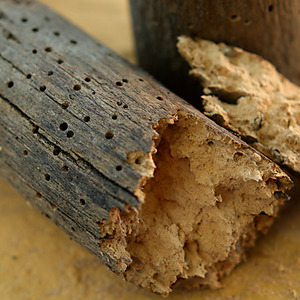Our ICF construction home is nearly done and now it is time for siding. We our doing pine board and batton – 9.5″ boards, 3″ battons. We plan on staining with a high end stain (Sachco, Sikkens)
Our original intension was to stain all boards, all sides before putting it up. The house is 32 x 64 – so this would be a big job, but we understood this to be best to seal the wood completely before installing.
I spoke to the bill owner yesterday – who also sells the stain – and he said don’t worry about staining before it is up. Put is up, stain it, leave the back unfinished to allow the pine to “breathe”
It seems everything we do we get mixed message of how to do it the right way! Any suggestions, reasons out there why we should do this one way or another?
Thanks so much!


















Replies
Oops
That's "mill" not "bill" owner .....house building is so much about "bill's" that was bound to happen :)
Assuming that you want the stain to also act as a preservative, and that the stain you use will be the type that is preservative, then you'd want to cover all sides and ends. No stain will entirely prevent wood from "breahting"--that is, allowing moisture to migrate into or out of the fibers.
To speed the work of treating the boards, do it by dipping rather than brushing. Make yourself a narrow trough a little longer than your longest boards, line it with 6 mil poly sheeting, dump in your gallons of stain and dip each board. Have horizontal drying racks ready to stack the boards for drying, and plenty of stickers to separate them as you stack. A helper is helpful if you can find a helpful helper :-)
Stain any end cuts before you nail them up.
And, be sure to use the traditional method of nailing up the board and batten cladding: you nail thru the batten to only one edge of the board and let the other board edge float under the next batten. This allows the width of the board to slide back and forth under the un-nailed batten as it will need to do when it expands and contracts with the changing seasons. This will greatly reduce splitting of the wide boards over time.
All the battens I've come across on old barns, were nailed through the center of the batten-between the boards. This has always been my idea of the traditional method. Think it's just a regional (Ohio) difference?
I agree on the all six sides of staining along with a rain screen of some sort behind the siding.
That's probably even better, assuming that the board edges don't get nailed thru from the battens because it reduces the potential shrinkage expanse of the board by half
And, I would guess that Ohio has a lot more old barns than Idaho.
We used to have a whole lot of old barns....................
Combines and other hellacious equipment? You can only cut out so many of those beams b/4 the barns structure is compromised.
Add a few million ground hogs and well................
The key is not to nail through any of the boards-batten nails go between the boards. Cut nails if you got em.............and native old growth wood.
Pine sidings on these barns would last a whole long time.
New pine-hardly old enough-good luck. I've seen some Hemlock B&B lately-it's supposed to last.
Good attention to grade and plantings, water management, etc might make it possible. Pine has a lot of cappilary action.
Took apart and old white oak corn crib..............mama mia-that stuff was pretrified, but well over a hundred yrs old (and that's in 70's of the last century). Plane it down if you've the nerve to and you had beautiful wood looked like the day it was milled.
Reading your comments makes me think of Eric Sloane"s A Reverence for Wood--a short, but really good read. It's probably out print, but you can likely find it at the library or Amazon.
rd
What?
You don't know I've had it since perhaps it's first printing? I probably picked it up '72 or so. Maybe sooner, did a project for a History class in college on barns of our area. I wish I could find a copy-it did make it into the pop culture library (if that still exists). And, got to work on the project with a nice woman.
And I thought I'd be opening up a new vista for you...
How about American Canopy?
nope.
I'll have to give that a look.
Was it you that recommended Concrete Planet?
You definitely want to coat all sides, otherwise the wood will curl badly.
The suggestion of a trough is a good one, but do this: Form up the trough with scrap lumber, landscape timbers, whatever, then add a "ramp" off one side for about 3 feet. This can be plywood or just sticks of lath tacked between the trough form and some sort of elevated support (maybe stacked landscape timbers) on the other end.
Cover the whole thing with plastic and begin staining. As the boards come out, set them onto the ramp (maybe on added lath strips, to hold the boards off the plastic). Let them drain for a minute or three on the ramp before moving to your stickered drying pile. You'll save a lot of stain and have less mess.
yessir
It wasn't a hold your interest till you passed out on the couch type of read-
but, very informative.
That made it quite enjoyable to learn more about concrete.
Somewhere around here I've got a copy of "age of barns" might be called and one of his illustrative books on old tools. Loved his drawings.
Also, I should dig out some books from maybe the 30's/40's-Deltagram-from Delta tools.
Some would advise ..
Some would advise that you:
Call your supplier.
Call Sikkens
Call an engineer.
Gee Wez what is wrong with you people.
LOL.
Do
What is your problem?
Could do any or all of that - or just ask here. Like anywhere - there would be varied opinions from them as well ... and the engineer would cost alot and the Sikkens rep would want me to use alot!
I like the advice I get here - and the fact that each see's the others and they can converse about their reasoning!
Thanks for your input!
Stain one side, nail the board up then stain the other side and edges. Same with the battens. Keep one person staining and two installing.
Old Painters
Old painters say paint/stain all ends, edges and sides. Excellent advice. The boards should have one nail in the center, 1/4"-1/2" gap between boards and one nail in the battens, landing in the gap between the boards. Everything can then expand and shrink as they please.
What are you nailing into, with the ICF as a substrate. Just curious, had some challenges with this in the past, can't remember the brand name of the ICF that was used.
We are strapping the ICF with 3" strapping - thanks for the help!